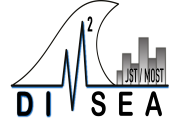Citation:

Abstract:
This paper presents two opposite perspectives on the labor market in the aftermath of a disaster. The first posits a production sector that is non-tradeable and a labor market with total mobility. This is modeled using agent based simulation. The second presents a production sector that is fully tradeable and a labor market that is perfectly immobile. This is modeled using traditional micro-economic modeling and numerical simulation. Outcomes from the two approaches are compared. In the no-disaster case, participation rates and wages under both approaches settle down to a low-level equilibrium albeit at different rates. In the case of a disaster, outcomes are very different. Under the agent based model labor market mobility results in solutions being found outside the area. In the micro-economic approach workers absorb the recovery process within the area readjusting their demand for labor. When population movement is introduced the system reorganizes at a new equilibrium. The results highlight first, the importance of labor mobility and flexibility and second, the divergent absorption costs in determining the long-term outcomes of a disaster.

